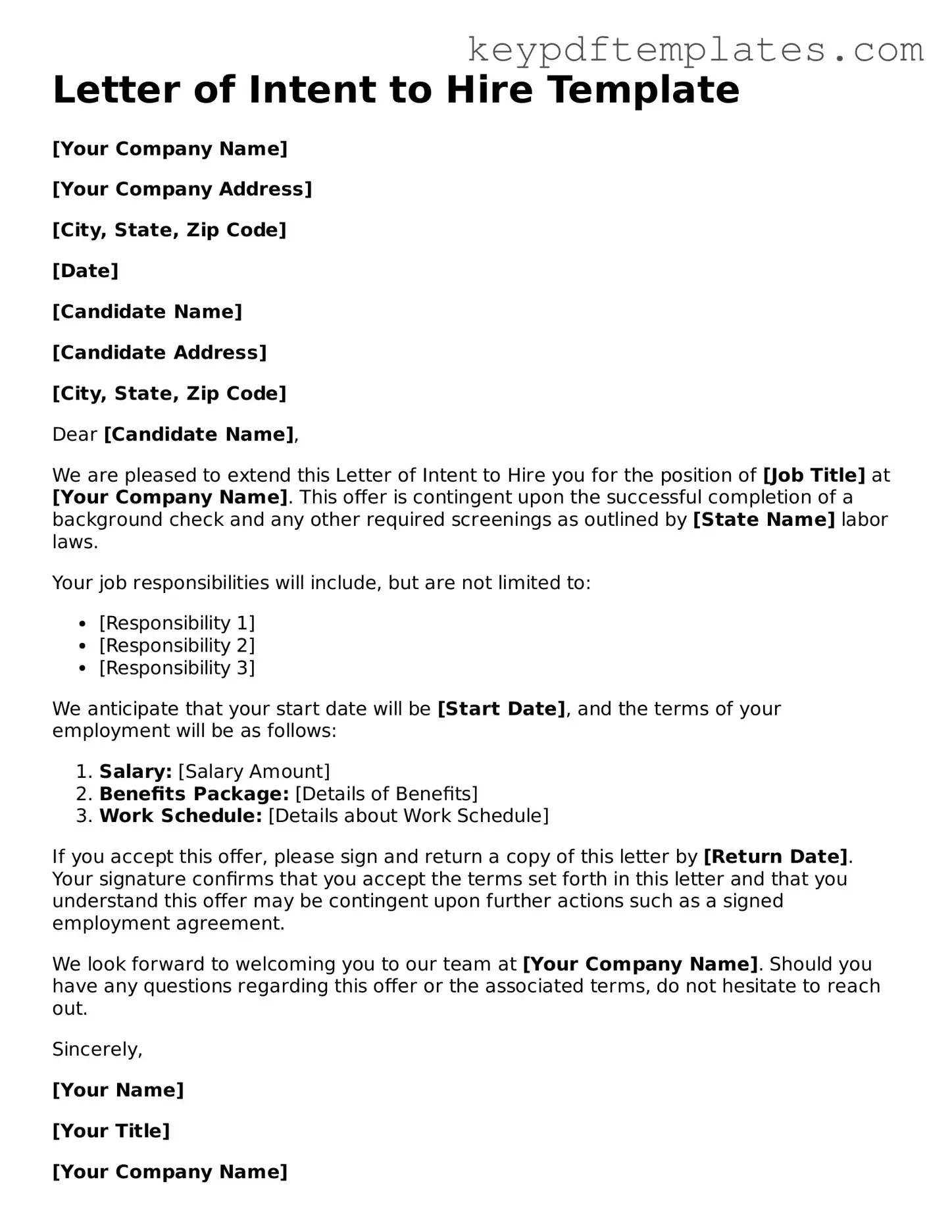Printable Letter of Intent to Hire Template
A Letter of Intent to Hire is a document that outlines an employer's intention to offer a position to a potential employee. This form serves as a preliminary agreement, detailing the essential terms of employment before the final contract is drafted. Understanding its significance can help both parties navigate the hiring process more effectively.
Modify Document Online
